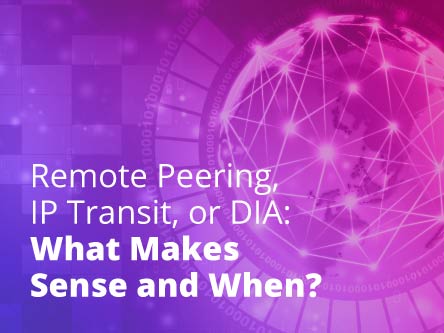No one expected 2020 to start off like this. The world is challenged by a global crisis that has forced companies to change the way they run their business while dramatically altering how people access and consume the internet.
Data and graphs have shown significant increase in internet traffic around the world.
The amount of stress on the internet infrastructure also means the internet exchanges (IX) and internet service providers (ISP) have to effectively manage these higher than usual volumes.
New world records
The biggest upswings have been noted by DE-CIX in Frankfurt but everyone is expecting similar results at other exchanges such as the Amsterdam Internet Exchange(AMS-IX) and London Internet Exchange(LINX).
Of course, new all-time traffic peaks were recorded over the last few weeks. The good news is that IXs are built for these surges and are well prepared to deal with them.
While this bodes well for the industry in terms of proving its worth towards facilitating global communications, the trouble is that not all downstream service providers are ready for the sudden upswings.
This could result in higher lags, slower internet speeds, and—heaven forbid—outages if the current bandwidth demand escalates tenfold due to worsening scenarios.
Can IP transit weather the new normal?
Transit providers are receiving more requests for upstream traffic and are now serving large volume of IP transit – a service where an ISP allows traffic to travel through their network to its final destination.
There are three tiers of IP transit providers, and latency can be a major problem when high volumes of IP transits (so-called ‘hops’) result in even tier 1 providers becoming less efficient or more selective in routing transits. For customers, this also means running the cost up since IP transit service is charged on a per volume basis.
Consider a scenario where after the pandemic subsides, the global upsurge for internet bandwidth becomes the new normal. Is there an alternative solution to meet the challenges?
Remote peering is the prescription
Instead of relying only on IP transit, a lot of ISPs and over-the-top (OTT) media services have already placed their bets on leveraging the IXs to keep traffic local.
Plus, the IXs have the dedicated bandwidth capacity to serve the increase in demand. This ensures that user experience is not adversely impacted in locations where there’s high internet traffic.
Many if not all of these ISPs and specialised applications and content providers need to peer at the IXs. To handle the sudden spikes, they will also need to increase their bandwidth capacity for connecting to the exchanges immediately without being locked down on a long-term contract.







